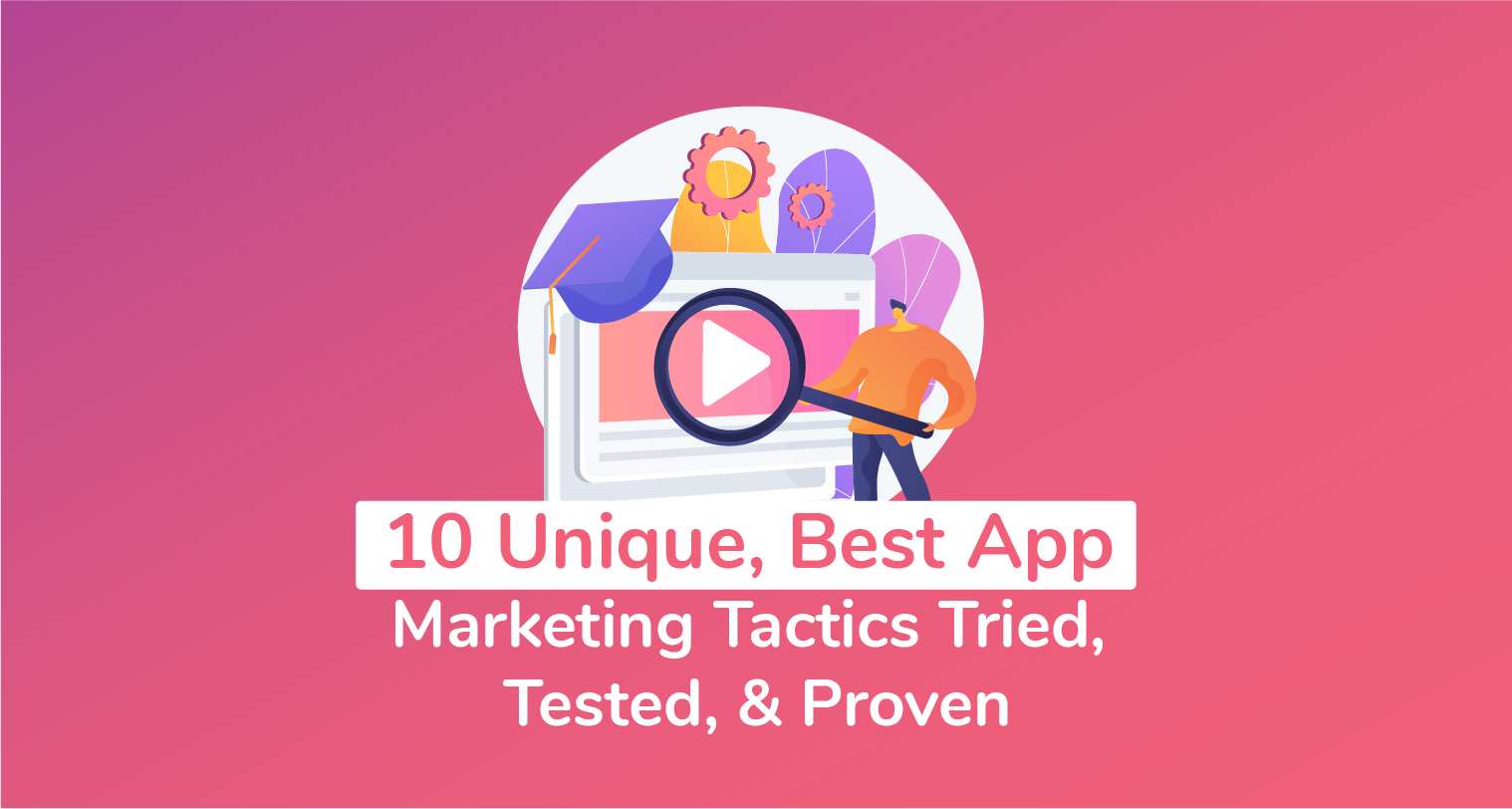
How To Market A Social Networking App
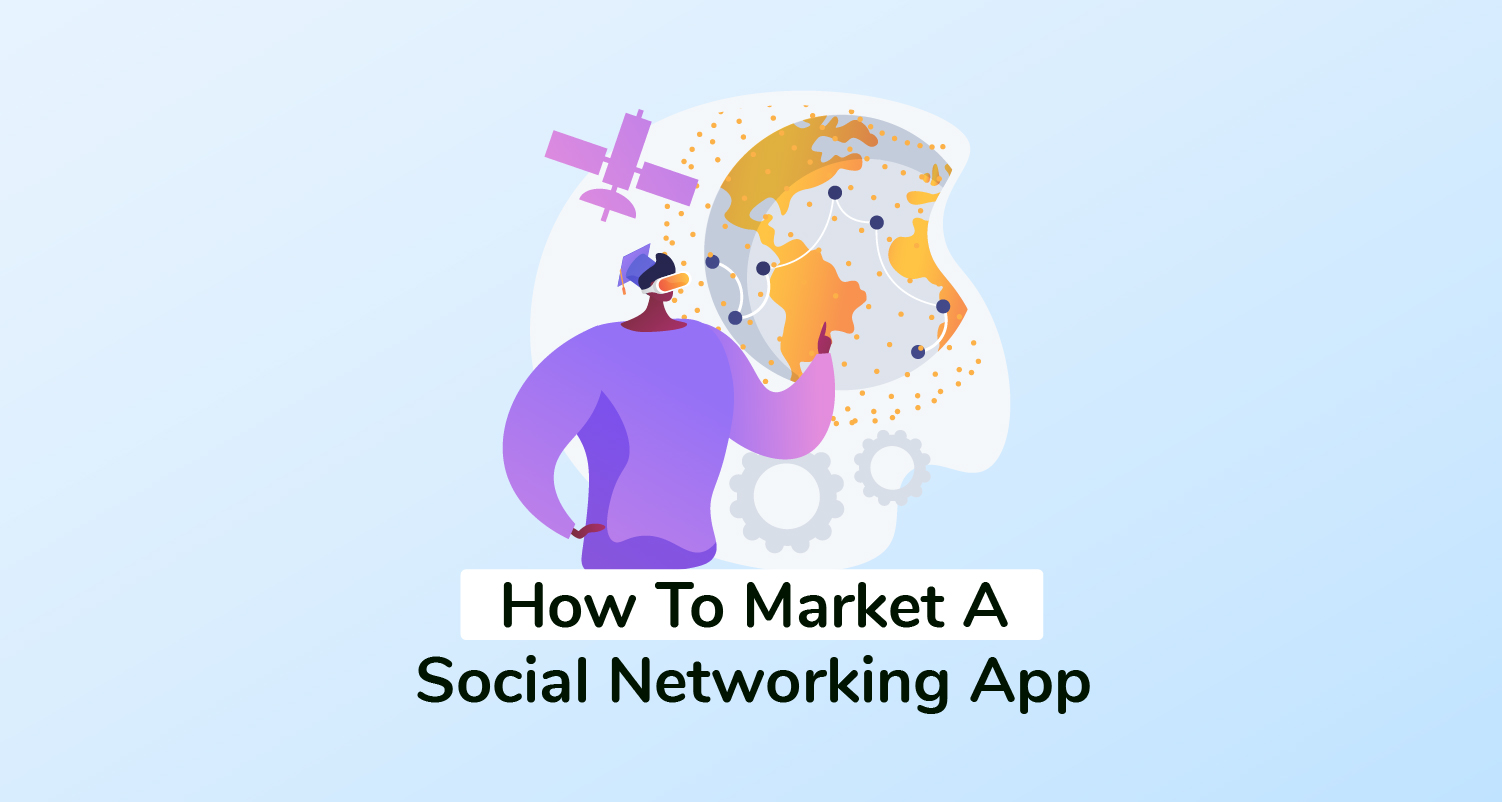
If you hope to successfully market a social networking app, the first thing you’ve got to acknowledge is, this is not one of those forgiving mobile app categories that leave some room for error and blind experimentation.
Table of Contents
- What Can New Social Networking Apps Expect In The Current Market?
- 6 Clever Tricks To Market A Social Networking App In 2025
- #1. Get Creative With The App Name
- #2. Generate Pre-Launch Buzz With App Reviews
- #3. Capture Attention With App Press Releases
- #4. Jump Ahead Of Your Competition With Strategic App Store Optimization
- #5. Target The Best Converting Leads With Paid Ad Promotions
- #6. Leverage User-Generated Content To Drive Recommendations
- Key Takeaways
Now’s not the time to market your social media app by randomly testing out different app promotion strategies.
And the reason is, the social networking app category has pretty exceptional trends, opportunities, and challenges – all of which require unique marketing approaches.
Don’t get me wrong, though. I’m not saying that you won’t be using the standard mobile app marketing method that we’ve featured in our user acquisition guides. Rather, the point here is, you have to cleverly optimize every single technique for the social networking market.
That might seem simple and straightforward – but, as it turns out, many app creators mistakenly try to be unique by reinventing the wheel. Such blunders ultimately end up costing them not only time and money but also a lifeline for their social networking apps.
Now, to avoid the same fate, you might want to rely on existing methods that have already been proven, instead of blindly trying out new ones.
You can start off with the six mobile app marketing strategies featured in this guide, as they are based on findings generated from thousands of campaign trials over the past decade.
Yes, that’s right – social networking apps happen to feature quite prominently in the long list of mobile apps that PreApps has partnered with in the recent and distant past. So, you can count on us to walk you through what it truly takes to successfully market a social networking app.
For the sake of clarity, though, let’s begin with the basics. What chances do new social networking apps have in today’s increasingly competitive market? And what types of challenges and opportunities should you expect along the way?
What Can New Social Networking Apps Expect In The Current Market?
The social networking mobile app category has lately been experiencing what can be described as “mixed” market trends.
You’ll notice, for instance, that while social media apps lead the log for the most downloaded apps, the same cannot be said for the host category. It turns out that, in terms of App Store popularity, the social networking category lags far behind several other niches.
The Facebook app itself has accumulated more than 4.6 billion mobile app downloads over the past ten years – consequently making it the most downloaded app in the 2010s. Messenger, another social networking app, takes the second position with 4.4 billion app downloads, while WhatsApp comes third with 4.3 billion.
The dominance doesn’t end there, though. With the exception of UC Browser at position eight, the rest of the top ten spots are taken by social media apps. I’m talking about the likes of Instagram, Snapchat, Skype, TikTok, YouTube, and Twitter.
When we switch over to the app category ranking, however, the tables run in favor of niches like Games, Education, Entertainment, and Utilities.
In 2019 alone, mobile games across the Apple App Store and Google Play Store attracted about 10 billion app downloads, while the Photo and Video category was ranked second with 2.4 billion app installs. Entertainment finished third, followed by Utilities – and then Social Networking apps ranked fifth, slightly ahead of the Shopping category.
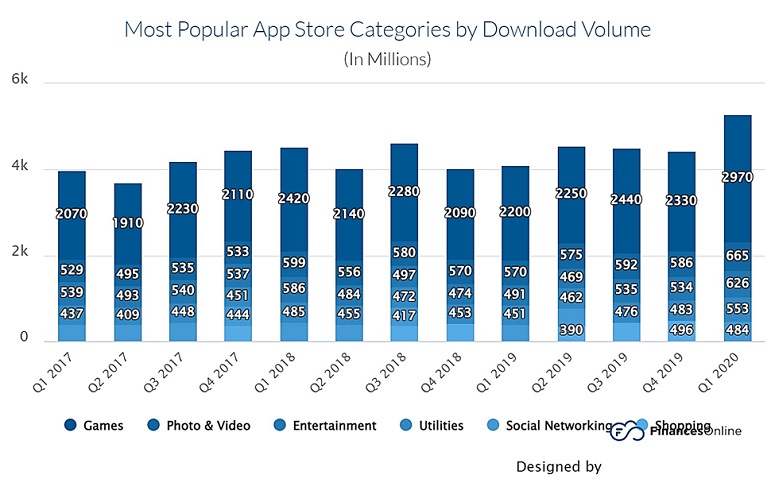
This turn of events partly proves that social networking is a category of two extremes. Although its top-ranked players boast billions of app downloads, the impressive figures are eventually canceled out by their counterparts’ dismal performance.
This stark difference will substantially dwarf your new social networking app when it hits the market. So insignificant will it appear, in fact, that market trust might not come easy. It’s particularly difficult to convert app users when your competitors are already category favorites with billions of app downloads to their name.
It’s not all bad news, though. While the Social Networking category is dominated by larger-than-life brands, it just so happens that you won’t be competing with as many apps as you would in say, the Games category.
Games alone take up about 21.49% of all active mobile apps in the App Store. Business, on the other hand, has a share of 10.1%, followed by Education with 8.67%, Lifestyle with 8.61%, Utilities with 6.25%, and so forth.
Social Networking apps are placed in the bottom half of the log, with a share of only 2.3%. That represents about 46,000 apps in total, which is only a fraction of the over half a million games apps. This is good news to anyone who’s looking to lunch and market a social networking app.
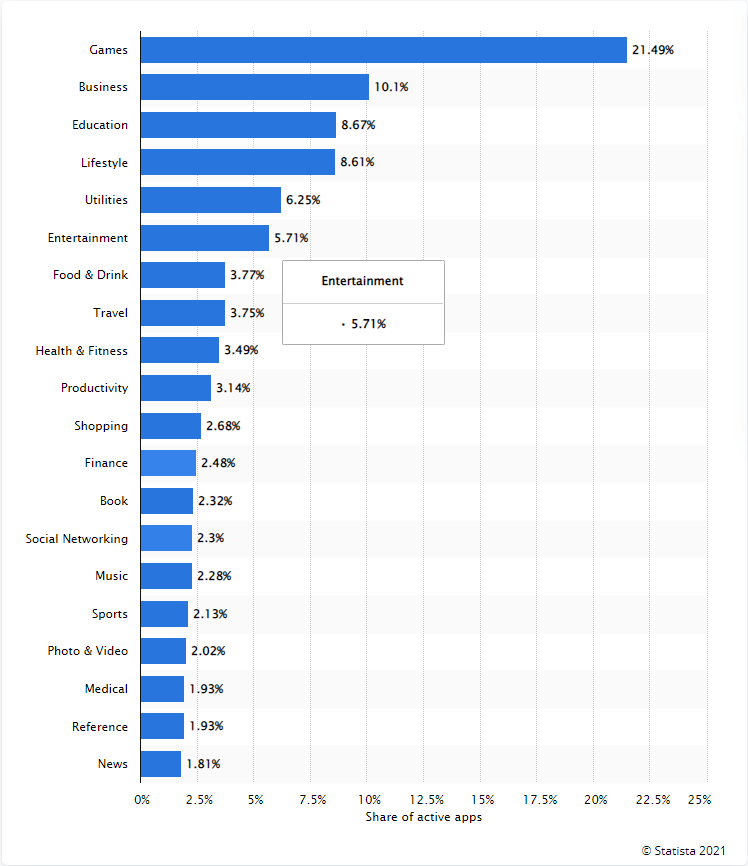
And it gets better. Apparently, social networking apps generate the highest market reach among all App Store categories. They boast an impressive market reach of 90.15%, which translates to favorable app user retention rates, as well as increasingly positive lifetime value.
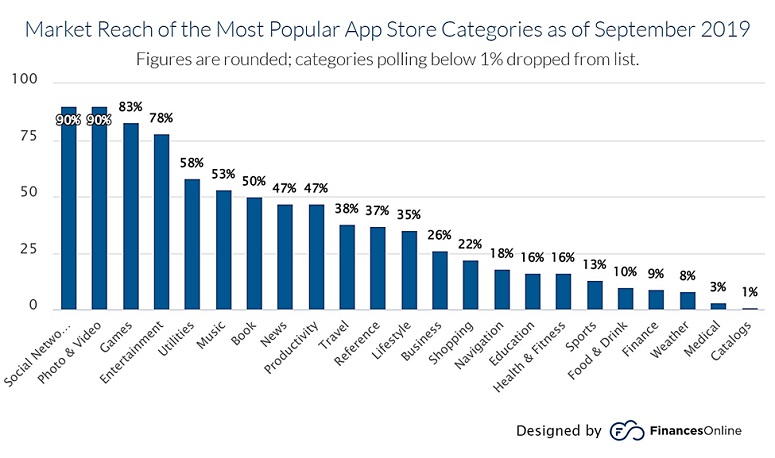
The total value of this market, as of 2019, was $192.950 billion. This is just but a fraction of the amount it’s projected to hit by 2026 if it keeps growing at the current CAGR of 25.38%. Analysts suggest that there will be over $939.679 billion up for grabs in the social networking platform market.
According to industry research, this exponential growth is fuelled by increased in-app engagement among not only millennials but also other age groups, as well as businesses that are using social tools to promote their products.
Therefore, as you piece together a plan for marketing your social networking app, you might want to consider all these segments as part of your target audience.
6 Clever Tricks To Market A Social Networking App In 2025
#1. Get Creative With The Mobile App Name

You can tell that “Facebook” was named so to place emphasis on the platform’s role as a face profile directory, where users get to build digital profiles that are headlined by their photos.
Another obvious name is Snapchat, as it was seemingly derived from two self-explanatory words – “Snap” and “Chat”.
This is the same principle that you should use when naming your new social app. What you choose, in the end, should give your prospects a clear impression of your app’s purpose.
But, that’s not all. The name should convey the app’s objective while tactfully eliciting deep interest from the audience. This is how you get them to download and possibly try out the social networking app.
However, don’t restrict yourself to literal terms. Instead of basic app titles like “FriendChat”, try to come with catchy and engaging names that creatively offer some form of description. This is the concept behind app names like “WhatsApp”, “Instagram”, “YouTube”, and “TikTok.
While you’re at it, remember to additionally incorporate keywords that are popular with your target audience. The point of this is to boost your ranking in the relevant App Store searches.
But, don’t make blind assumptions on the terms that your prospects prefer – you should, instead, conduct keyword research on a specialized App Store Optimization tool. It’ll give you valuable insights into the search frequency and competitiveness of various keywords.
This is more or less one of the core strategies that we used to successfully market a social networking app called TagFi. Our team simply changed its name from “Tag-Fi” to “Tagfi”, and then we added a “Social Group” suffix to briefly describe what it was all about.
On the app title, therefore, the full name appeared as “TagFi – Social Group”. This then worked in tandem with other strategic keyword inclusions to propel the social networking app to the topmost ranking across several keyword search results.
Even billion-dollar competitors like Google Hangouts, Tango, and Facebook couldn’t keep up with it.
#2. Generate Pre-Launch Buzz With Mobile App Reviews

Instagram’s rise to the billion-dollar peak started with a simple prelaunch app marketing strategy involving app reviews.
The whole journey started with the development of a photo-sharing app called Burbn. Despite its seemingly promising prospects, though, it turned into a complete failure after its launch – as app users couldn’t wrap their heads around Burbn’s complex tools.
This whole project was eventually scrapped – but the founders had learned one very critical lesson, which they proceed to apply in their subsequent project. Instagram was their second development and unlike the previous one, the mobile app developers were keen not to launch without sampling user feedback.
Basically, they built a beta test version of the Instagram app, which was then distributed to multiple contacts. The app creators used this opportunity to additionally distribute the pre-release version to influential app reviewers and tech bloggers.
This move alone earned Instagram a lot of pre-launch buzz, as the bloggers were quick to share their experiences with the new social networking app. So widespread was the resultant publicity that, by the time Instagram launched, it managed to acquire more than 25,000 app users within the first 24 hours.
Now, that’s the potential power you stand to unleash when you market a social networking app through pre-launch app reviews. You just need to link up with well-renowned app reviewers, distribute the app’s beta test version to the appropriate users, collect feedback, and then have reviews of the core features published by the tech blogs.
#3. Capture Attention With Mobile App Press Releases

Speaking of tech blogs, another resource that you might not want to miss out on is mainstream media. By working with reputable media platforms, you get to chance to organically market the social networking app to a wide audience base – which could potentially stretch into millions of prospects.
It’s reported that the CNN news site, for instance, attracts more than 378 million visits per month. MSN, on the other hand, boasts 329 million visits per month, while FoxNews hosts 266.3 million.
You won’t be aiming for all that exposure, though. Rather, your core focus should be the share of readers who are interested in tech news and mobile apps. That means the best place to run your story would be on the tech sections of the media platforms, or maybe on dedicated app news sites that enjoy a solid following.
Whichever forms of media that you settle for, you’ll need to reach authors through an app press release. This is a formal document that briefly outlines what you’d like to communicate about your new social networking app. The details here should be intriguing enough to not only capture the publisher’s attention but also convince them to run the story.
If you reach out to the right media platforms, you could even turn your new social networking app into some sort of celebrity way before its launch date.
#4. Jump Ahead of Your Competition With Strategic App Store Optimization
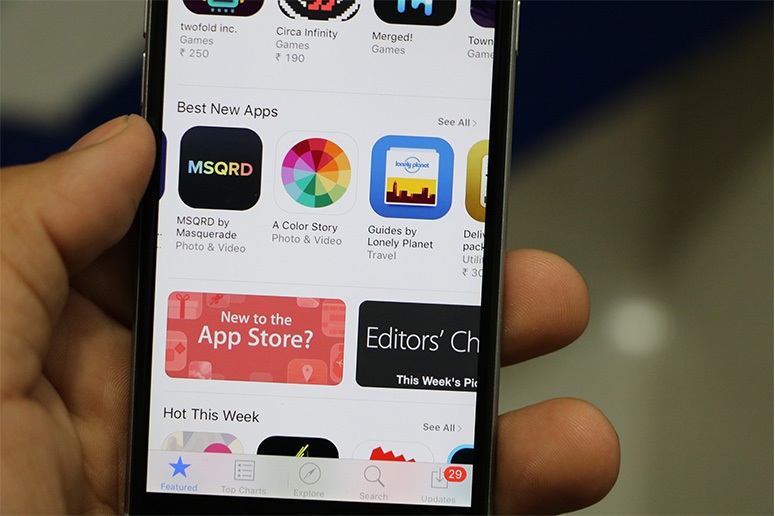
With hundreds of millions of app users flocking the App Store to download social networking apps every week, you ought to boost your in-store app discovery chances with App Store Optimization.
ASO, as it’s known in short, is more like the SEO of organic searches within the App Store. This is where you strategically tweak multiple on-page and off-page ranking parameters to keep your app ahead of its competitors in the keyword search results and overall impressions.
You should, for example, start off by finding appropriate high-value keywords to rank for. There’s a wide range of smart App Store Optimization tools that could help you with keyword research. Most of them break down the search terms to reveal related keyword suggestions, along with their frequency metrics and level of competitiveness.
It’s also possible to dig through your competitors’ App Store pages to determine the precise keywords that they rank for. You can then hijack a couple of them to tactfully spread awareness among your competitors’ core audiences.
The iOS App Store, in essence, allows you to submit up to 100 characters in your keyword field. Try to maximize this limit by dropping as many relevant terms as possible, mostly in their singular form.
The feature, however, isn’t offered on the Google Playstore. Instead of relying on the keyword field terms, the Android store takes into account the keywords that appear on the app title, app reviews, app description, and the publisher’s name. As such, you might want to tweak all of them accordingly.
Other important parameters that you out to refine as part of your App Store Optimization include the app icon, app preview videos, and app screenshots.
When prospects come across your social networking app, for instance, it’s the icon that will form the first impression. Making a solid impact at this stage has been shown to boost conversations by 35%.
Then once they navigate to the app page, you can expect your prospects to make their decision within the first 3 seconds. 60% of them, in fact, don’t even scroll past the first page. So, you’ll need to set up highly impactful screenshots that intuitively communicate the value of the social networking app, without necessarily overwhelming the page visitors with technical details.
The one tool that can intelligently help you with all these ASO parameters is PreApps AppReport.
At no cost at all, it dives deep into your App Store page to audit everything, and then provide detailed insights into the state of your app’s ranking elements. What’s more, you even get recommendations on how you can mitigate all the pending issues.
#5. Target The Best Converting Leads With Paid Ad Promotions
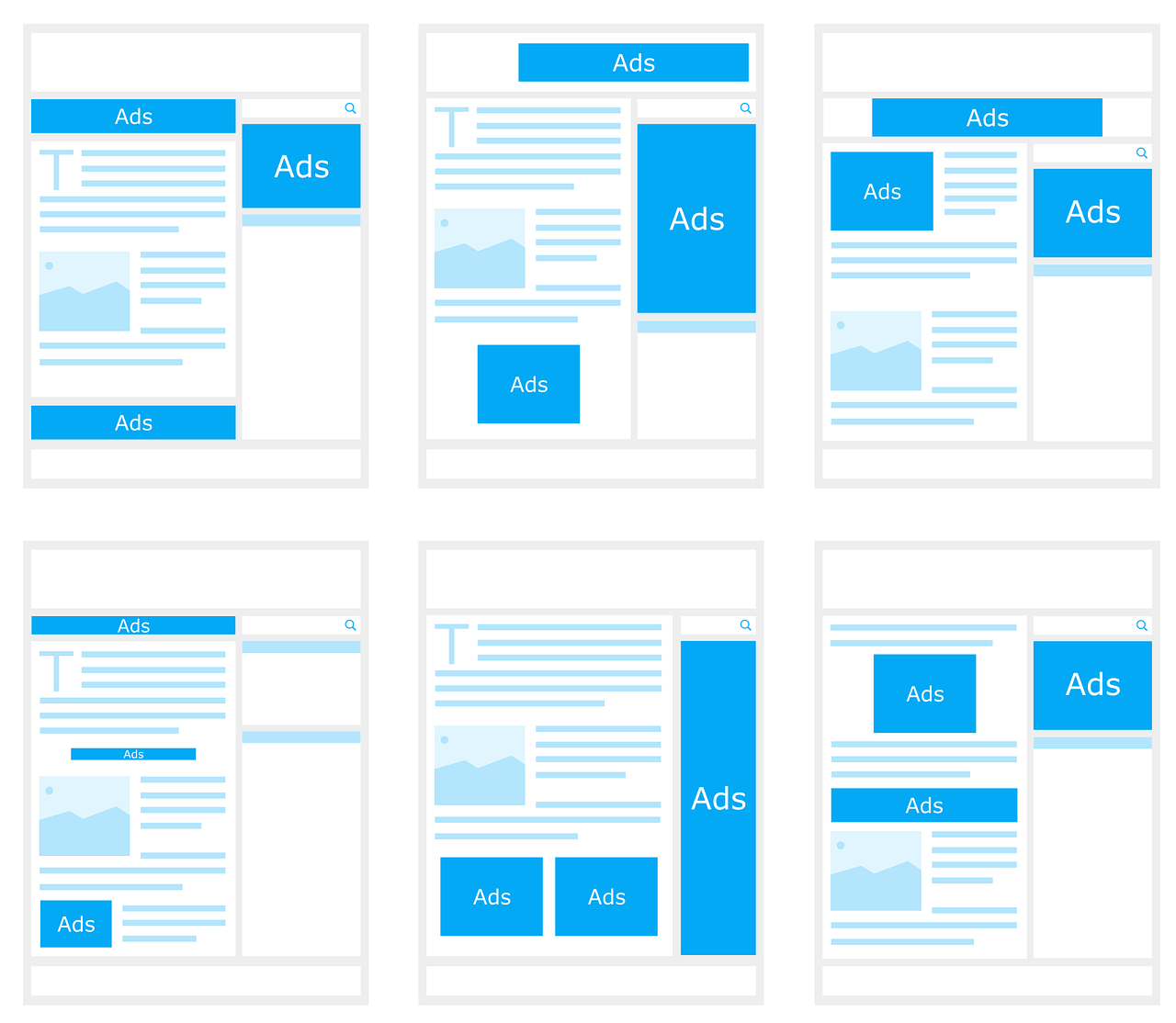
While organic mobile app marketing is free and great at sustaining audience interest over the long haul, it takes a lot of effort and time. Paid app promotions, on the other hand, are much more straightforward, and great at targeting prospects – but they lack systematic lead nurturing.
With that in mind, the best strategy here would be systematically leveraging both methods, instead of settling for one. This entails supplementing your organic efforts with paid app promotions to dynamically make the best out of both worlds.
Now, when it comes to paid strategies, you should specifically market the social networking app using ad platforms that support granular targetting.
A good example is Facebook Ads, whose Cost Per Install (CPI) averages $1.04. Twitter tends to be costlier, as its app install campaigns and re-engagement ads charge, on average, about $1.95-$3.25 per instance.
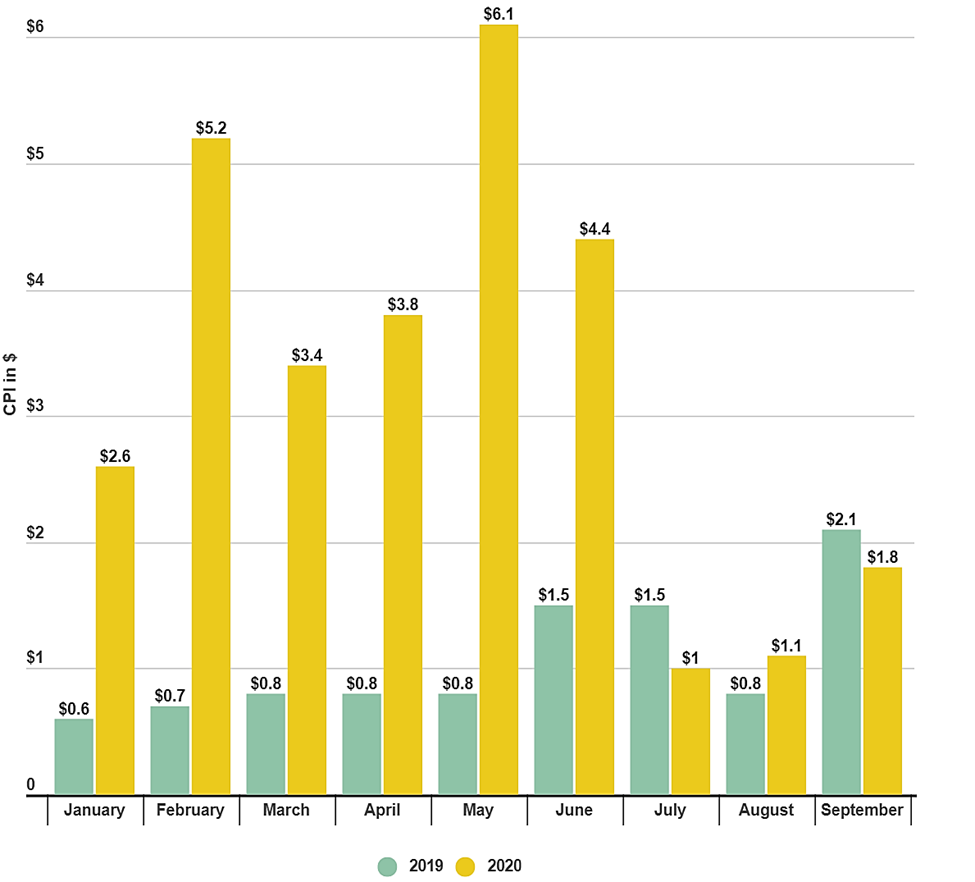
All in all, though, the best paid app marketing platform has got to be Google Universal App Campaigns (Google UAC). I’m particularly fond of the platform because it saves your media submissions, and then proceeds to engage target audiences across Google’s extensive network of campaign properties.
You’ll be able to simultaneously market a social networking app across Google Search, YouTube, Google Play Store, Discover on Google Search, and the Google Display Network.
#6. Leverage User-Generated Content To Drive Recommendations

App promotion content doesn’t always have to come from you. One particularly clever way to market a social networking app entails leveraging User-Generated Content to organically rally peer-to-peer recommendations.
Now, for the sake of clarity, User-Generated Content – or UGC in short – refers to media created by your mobile app users. You just need to build smart content creation tools into your platform, bundle them with automated social sharing features, and voila!
Your mobile app users will excitedly share their creations with peers across different platforms, which means more awareness for your social networking app.
That makes UGC campaigns a win-win strategy for you and the mobile app users. The content creation and social sharing tools on your app grant them the exposure they crave, while you get to organically form lasting impressions on their peers, which translates to increased mobile app acquisitions.
Research by Nielsen established that peer-to-peer connections are so intimate that 92% of consumers tend to trust recommendations from their peers. This means that your mobile app users are capable of cumulatively generating more leads and conversations than your mobile app promotion campaigns.
TikTok happens to be a perfect example of how User-Generated Content can exponentially market a social networking app. The platform gives users a host of AI tools for creating and editing videos, which are then distributed extensively within the host network, as well as across other social media sites.
Then get this. The externally shared clips come with TikTok branding that is not too distracting, but just prominent enough to drive awareness.
In terms of figures, UGC has arguably catapulted TikTok to the point of hitting major milestones way sooner than other industry giants like Facebook. Consider, for instance, the fact that the former took only five years to hit one billion users while the latter had to wait for eight years.
According to a study that used an AI tool to accurately track and calibrate the impact of various types of ads, TikTok’s UGC videos unsurprisingly outperformed both Facebook and conventional ads in capturing audience attention.
TikTok’s UGC videos scored 8% higher than the corresponding TikTok brand videos, 21% better than Facebook Ads, and 68% higher than conventional ads.
Bonus Tip: Keep Tracking And Re-adjusting Your Mobile App Marketing Campaigns
As you continue to market a social networking app, keep in mind that it’s not a static process. The fact is, digital mobile app marketing campaigns are extensively dynamic, with numerous intricate parameters that tend to change from time to time.
To stay on top of everything, you need to continuously track and measure all the campaigns. This is where you bring in automated analytics tools and maybe a Customer Relationship Management (CRM) suite to keep tabs on your omnichannel interactions, and then provide accurate reports on the performance and overall progress.
Such insights are pretty handy in reviewing the efficacy and ROI of your app campaigns, after which you can proceed to make the appropriate adjustments.
Key Takeaways
To sum it all up, here are the most important points that you might want to keep in mind:
- You might want to rely on existing mobile app marketing methods that have already been proven, instead of blindly trying to reinvent the wheel.
- While social media apps lead the log for the most downloaded apps, the social networking category lags far behind several other niches.
- Social networking is a category of two extremes. Although its top-ranked players boast billions of app downloads, the impressive figures are eventually canceled out by their counterparts’ dismal performance.
- Games alone take up about 21.49% of all active mobile apps in the App Store. Social Networking apps are placed in the bottom half of the log, with a share of only 2.3%. That represents about 46,000 apps in total, which is only a fraction of the half a million games apps.
- Social networking apps generate the highest market reach among all App Store categories. They boast an impressive market reach of 90.15%, which translates to favorable app user retention rates, as well as increasingly positive lifetime value.
- The total value of the social networking market, as of 2019, was $192.950 billion. It’s further projected to hit $939.679 billion by 2026 if it keeps growing at the current CAGR of 25.38%.
- This exponential growth of social networking apps is fuelled by increased in-app engagement among not only millennials, but also other age groups, as well as businesses that are using social tools to promote their products.
- The app name should convey the app’s objective while tactfully eliciting deep interest from the audience.
- Conduct keyword research on a specialized App Store Optimization tool to get valuable insights into the search frequency and competitiveness of various keywords.
- To market a social networking app through pre-launch app reviews, you just need to link up with well-renowned app reviewers, distribute the app’s beta test version to appropriate users, collect feedback, and then have reviews of the core features published by the tech blogs.
- An app press release is a formal document that briefly outlines what you’d like to communicate about your new social networking app.
- ASO, as it’s known in short, is more like the SEO of organic searches within the App Store. This is where you strategically tweak multiple on-page and off-page ranking parameters to keep your app ahead of its competitors in the keyword search results and overall impressions.
- Instead of relying on the keyword field terms, the Android store takes into account the keywords that appear on the app title, app reviews, app description, and the publisher’s name.
- When prospects come across your social networking app, for instance, it’s the icon that will form the first impression. Making a solid impact at this stage has been shown to boost conversations by 35%.
- Once they navigate to the app page, you can expect your prospects to make their decision within the first 3 seconds. 60% of them, in the end, don’t even scroll past the first page.
- When it comes to paid strategies, you should specifically market the social networking app using ad platforms that support granular targetting.
- Facebook Ads Cost Per Install (CPI) averages $1.04. Twitter tends to be costlier, as its app install campaigns and re-engagement ads charge, on average, about $1.95-$3.25 per instance.
- UGC content creation and social sharing tools on your app grant users the exposure they crave, while you get to organically form lasting impressions on their peers, which translates to increased mobile app acquisitions.
- Peer-to-peer connections are so intimate that 92% of consumers tend to trust recommendations from their peers.
- When it comes to attracting audience attention, TikTok’s UGC videos scored 8% higher than the corresponding TikTok brand videos, 21% better than Facebook Ads, and 68% higher than conventional ads.
- To stay on top of everything, you need to continuously track and measure all the marketing campaigns.
Over To You
All in all, you could say that marketing a social networking app is a truly holistic operation with diverse engagement fronts. It begins with multiple pre-launch app marketing strategies to generate buzz ahead of the app launch, after which it transforms into an omnichannel campaign.
That means you’ll be required to coordinate the mobile app marketing efforts across not only the App Store, but also with media platforms, app reviewers, paid ad platforms, third-party social media sites, and even within the subject social networking app itself.
Thankfully, you don’t have to bug yourself with all these intricacies and the uncertainties that come with them. Trust our team of mobile app marketing professionals to expertly handle everything on your behalf.
It doesn’t even take much to get started on PreApps. Simply Schedule a Call with us today and we’ll be sure to breathe new life into your mobile app’s growth campaigns.
Newsletter
Don’t miss a thing! Sign up to receive daily news
Subscribe Newsletter



